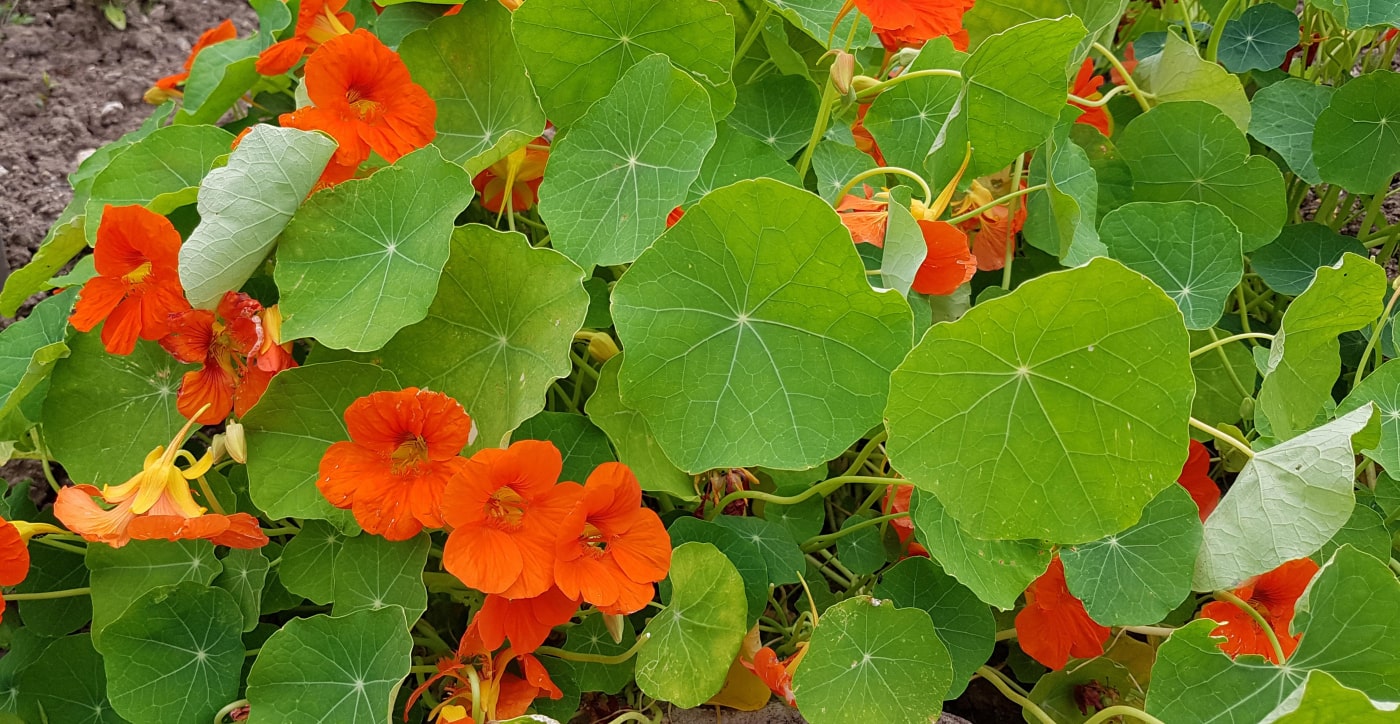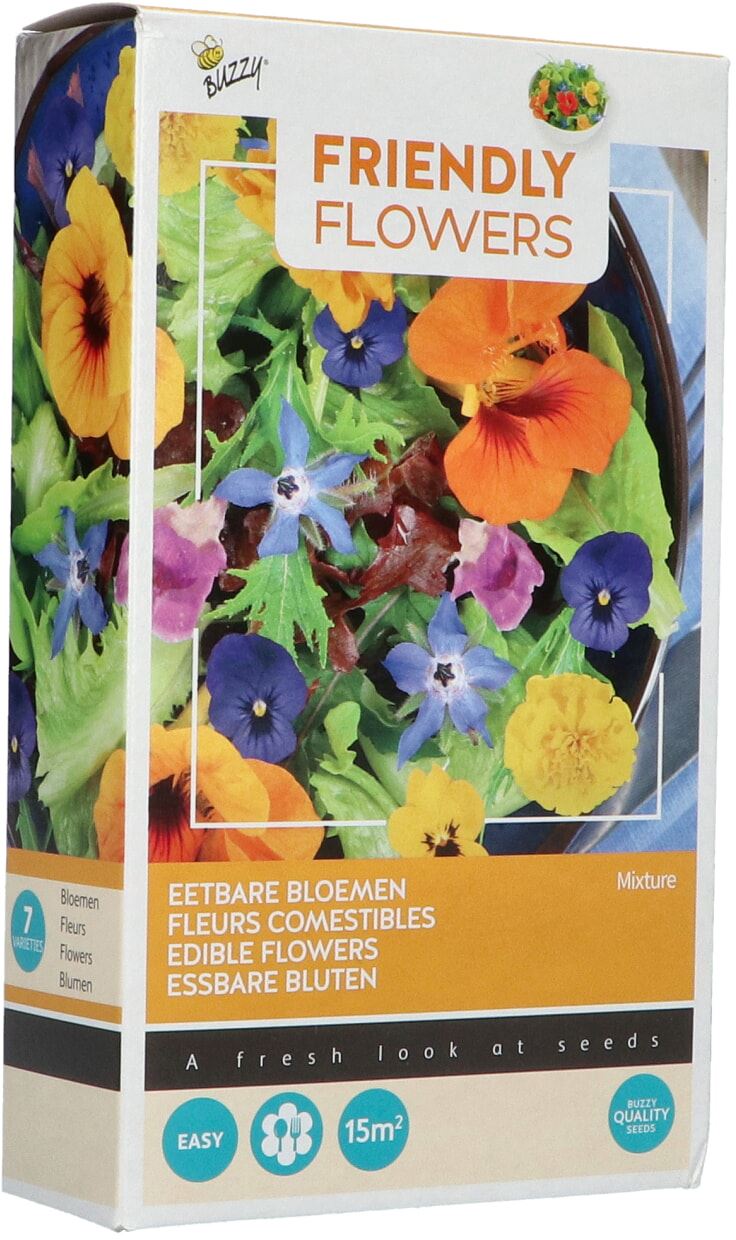
Edible flowers colour your plate
Flowers not only bring colour to your garden or home but also to your plate. We list our favourite edible varieties. Even a simple salad looks instantly festive with some colourful flowers, or how about an exotic cocktail? Besides carefully draping them on your dishes, you can also use them for lots of other things in the kitchen, like freezing them in your ice cubes. Or make your own ice creams and press a few flowers against the lollipop mould before pouring in your ice cream mixture. You can also use them to turn any basic cake into a real spectacle, ideal for the upcoming communion and garden parties!
You can sow edible flowers yourself or you can buy plants that you can start working with immediately.
Indian cress (Tropaeolum majus)
Monks cress is undoubtedly the most exotic in our list. With its large orange and red coloured flowers, it brightens up the whole vegetable garden. It prefers a
sunny spot but is not very demanding. It is an annual plant that is not winter hardy.
You can use this plant almost in its entirety in your dishes. The flowers have a softer flavour while the leaves are similar to
watercress and mustard lettuce. Even the seeds can be preserved and are a great alternative to capers. They are real vitamin C bombs that boost your digestion. So they have some health benefits too!
Indian cress is not only a beautiful and tasty picture but also very useful in the garden as it is enormously
attractive to aphids, the carrot fly and white fly, thus sparing other vegetables and herbs from these small but harmful culprits.
Goudsbloem (Calendula officinalis)
Marigolds look beautiful but
do not have a pronounced flavour. They are mainly decorative on the plate but you can also grind them and use them as natural colouring, like saffron. It is mainly its medicinal benefits that this plant is known for. It is therefore a common ingredient in many care products or medicines. Calendula has an anti-inflammatory effect, for example. This plant is therefore very useful in case of wounds because it has an antiseptic and healing effect.
Marigolds also have a beneficial effect on
digestion. You can make a strong tea of them or make an ointment with the marigold oil. You do this by letting the petals soak in a jar for a couple of weeks together with an oil of your choice (olive oil, jojoba or almond oil). It is best to put the jar in a warm place in the house (for example in the kitchen or behind the window). After a few weeks, the oil will have turned a yellow colour and absorbed all the beneficial properties of the petals. Now all you have to do is mix the oil with beeswax (approximately 5 parts oil to 1 part beeswax) to obtain a beautiful and nourishing ointment structure. Ideal for treating wounds or dry and chapped lips!
Edible pansies (Viola tricolor/Viola odorata)
During the spring and summer months multicoloured pansies adorn many windowsills in the street, but there are also varieties that can be eaten such as the
March and Three-coloured Pansy. They have a neutral taste and can be used in many dishes. The March violets have a dark purple to lighter lilac colour. While the tri-coloured pansies have smaller flowers with a yellow centre, surrounded by white and purple ombré leaves. They like a moist but well-drained soil. The pansies can enjoy a few rays of sunshine but make sure they get enough shade during the summer. They sprout quickly and reproduce, so be aware of this! Pansies are often used for itching, skin irritation and fever.
However, you do not have to look specifically for spectacular edible flowers. There are also a lot of vegetable and herb plants that many hobby gardeners have as standard in the kitchen garden and whose
blooms we can eat. Such as courgette flowers (delicious when fried with some tempura batter), the bright purple flowers of chives or the large white varieties of wild garlic. You can also pick flowers from Provencal lavender. Add them to some granulated sugar and you will get a delicious lavender aroma in your dessert... very nice in a panna cotta or crème brulée. The flowers of regular herbs such as rosemary and sage can also be eaten. Enough inspiration to get started yourself!
These articles might also interest you? 👇
- Buying seeds for the vegetable garden
- Do you already know the edible houseplant Oxalis triangularis?
- Mace, a delicious wonder of nature
More info? Receive all our gardening tips directly in your mailbox!
We'll only email you handy facts, green advice and our best promotions & discounts. You'll receive it about once a week and you can unsubscribe at any time. No spam, promise 🤞













